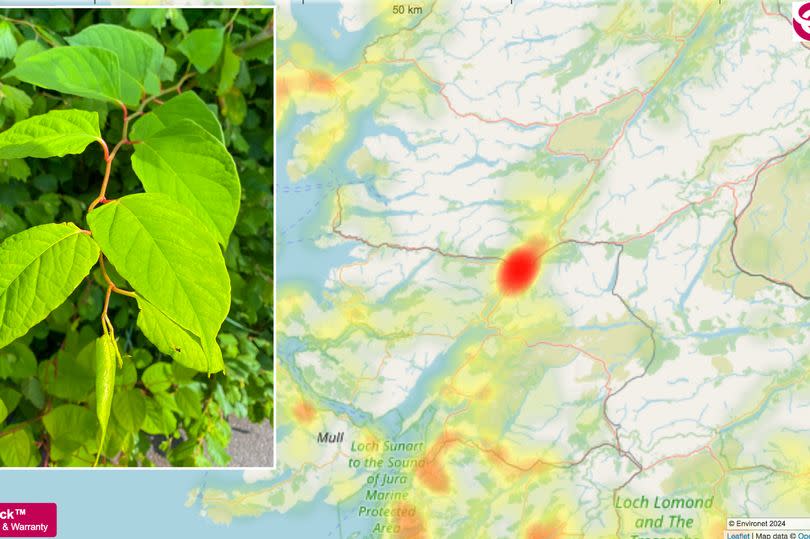Scotland's Japanese knotweed hotspots named on heat map — see the full list

A map showing the Japanese knotweed hotspots across Scotland and the UK has been unveiled.
Originally from East Asia, Japanese knotweed is a destructive invasive species that was first brought over in the 19th century. Feared by gardeners, the plant can grow as fast as four inches per day and forms dense thickets that can annihilate native plants and wreak havoc on infrastructure.
As reported by the Scottish Daily Express, Japanese knotweed can be recognised by its red stems and bamboo-like appearance. It can tower up to eight feet tall and roots can stretch as long as 28 feet, with the stems able to penetrate concrete, drains, roads and pavements.
Invasive plant experts Environet have developed a heat map generated from more than 57,000 known infestations, with new sightings added daily. Nationally, there are hotspots around Glasgow and Lanarkshire, as well as West Lothian, Edinburgh and Aberdeen.
There is also a high number of local reports in Fort William in Lochaber. According to the experts, there have been 154 infestations within four kilometres of the town, eclipsing the number of reports around similar coastal settlements such Oban (19) and Inveraray (17).
In recent years, Japanese knotweed has spread down the A82 from Fort William — resulting in iconic views of Loch Linnhe being obstructed. Offenders on community payback orders have been recruited to help stop the growth.

According to the Scottish Daily Express, one member of an online farming forum posted: "All the knotweed around Fort William is growing along the loch side and gets spread by the high tides. I have a shorefront field about four miles down the loch and get patches growing just along the highest tide mark most years try to roundup them on a regular basis but seems to be a bit of a losing battle."
Other hotspots for Japanese knotweed include Paisley with 92 sightings within four kilometres, Central Edinburgh with 75, and Penicuik in Midlothian with 60. Elsewhere, Brodick on Arran and Rothesay on Bute have both reported 42 incidents.
According to research by Environet, approximately 5 per cent of homes across the UK are currently affected by Japanese knotweed either directly or by neighbouring an affected property. A severe infestation can make your home significantly harder to sell and can lower the value of your property.
If not eradicated when the plant is small, getting rid of Japanese knotweed can be extremely expensive. Removing it from 10 acres of the London Olympics site reportedly cost more than £70 million.
See below for the biggest Japanese knotweed hotspots in Scotland currently. Meanwhile, the full heat map can be found on the Environet website.
Japanese knotweed hotspots in Scotland
Fort William - 154 infestations within four kilometres
Rutherglen - 148
Central Aberdeen - 146
Bearsden - 141
Bishopbriggs - 133
South Glasgow - 131
North Aberdeen - 125
Hamilton - 124
Uddingston - 119
East Calder - 98
Don't miss the latest news from around Scotland and beyond - sign up to the Scotland Now newsletter here.

 Yahoo News
Yahoo News 
